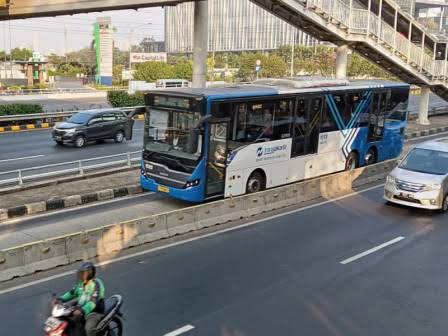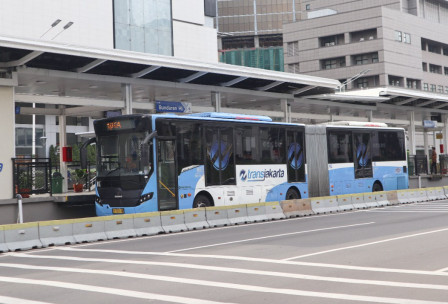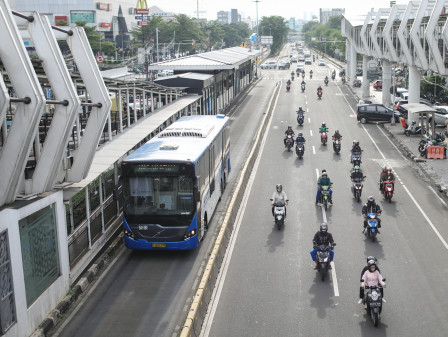46 Transjakarta Bus Stops will Be Revitalized Tomorrow
Reported by Aldi Geri Lumban Tobing | Translated by Nugroho Adibrata
Transjakarta has aside Rp 600 billion to gradually revitalize 46 Transjakarta bus stops this year. The details are four integrated stops, four iconic stops, and 38 stops in general.
So, we prioritize what is useful for customers
The integrated bus stops that will be revitalized consist of Cikoko, Cawang Train Station, Jatinegara Station 2, Kebon Pala, and Juanda.
As for the iconic bus stops consist of Sarinah, Bundaran HI, Tosari, and Dukuh Atas 1.
Transjakarta Bus Operation is Back to NormalAs the initial stage, 11 bus stops will be temporarily closed starting Friday (3/15) tomorrow. They are Dukuh Atas 1, Tosari, Bundaran HI, Sarinah, Gelora Bung Karno, Balai Kota, Kwitang, Juanda, Kebon Pala, Cawang Cikoko,and Jatinegara Train Station.
Technical and Digital Director for PT Transjakarta M Indrayana stated shuttle buses would be alerted to serve passenger transfers during the closure at the 11 stops.
The buses, which arrive every 5-10 minutes, would pick up and drop off passengers at the bus stop on the left side of the road or the nearest non-BRT stop from the temporarily closed bus stop.
After transferring passengers at non-BRT stops, the bus would return to the existing BRT lane to the stops that were not affected by the closure.
Moreover, the bus itself also has a Tap On Bus (TOB) machine, so users can pay for tickets on the bus.
"As long as the stop is closed, we will transfer passengers to a nearby bus stop using the shuttle bus. This temporary closure has been socialized via social media and Tije app," he explained, Thursday (3/14).
He went on to say that the revitalization will take place over the next six months. It was done because these stops integrate intermodal and are strategically located or in the center of the crowd. After it was done, they would facilitate people to move between modes of public transportation.
"So, we prioritize what is useful for customers," he continued.
Another reason was that the stops in terms of capacity were no longer able to accommodate a large number of customers. They were also over 10 years old.
Apart from service improvement, it would also prompt people's shifting behavior to switch to public transportation.
"This is a must thus many people as possible want to use public transportation," he concluded.





